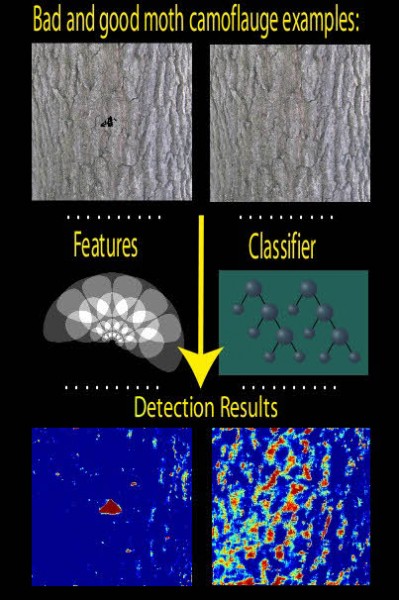A half million pound BBSRC collaboration with Biological sciences and experimental Psychology, the aim of this project is to develop a computational theory of animal camouflage, with models specific to the visual systems of birds and humans. Moths have been chosen for this study as they are a particularly good demonstrators of a wide range of cryptic and disruptive camouflage in nature. Using psychophysically plausible low-level image features, learning algorithms are used to determine the effectiveness of camouflage examples. The ability to generate and process large numbers of camouflage examples enables predictive computational models to be created and compared to the performance of human and bird subjects. Such comparisons will give insights into what aspects of moth camouflage are important for avoiding detection and recognition by birds and humans and thereby, give insight into the mechanisms being employed by bird and human visual systems

